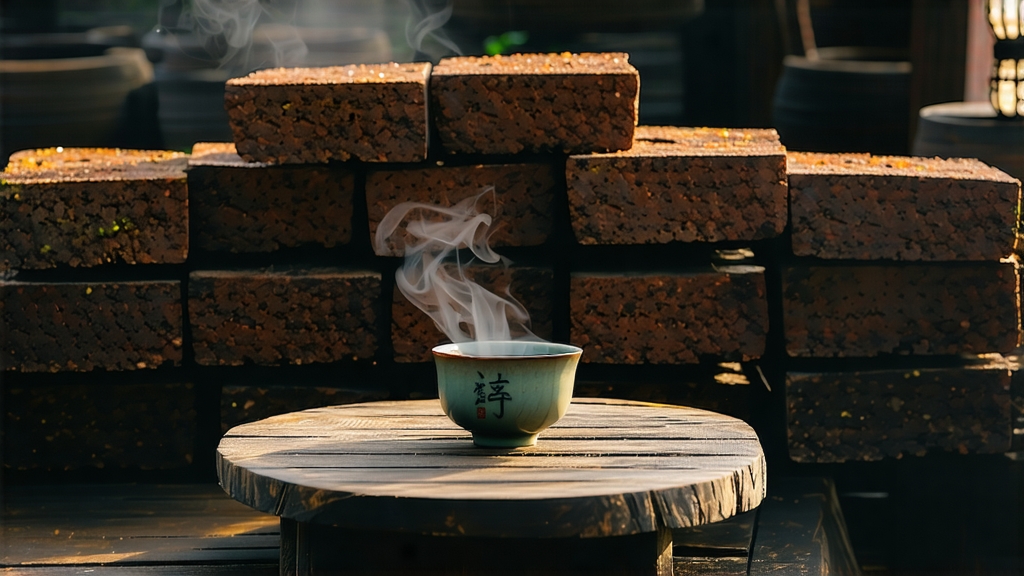
Liu Bao, literally “Six Forts,” is the quietest celebrity in China’s dark-tea galaxy. While Pu-erh grabs headlines and price records, Liu Bao has spent four centuries maturing in the humid caves and camphor-lined warehouses of Guangxi Province, emerging only when its leaf has turned as silky as velvet and as fragrant as a tropical forest after rain. To international drinkers it is still a cipher, yet one sip explains why Cantonese dockworkers once called it “the oil that smooths life”: deep, sweet, woody, with a cooling camphor finish that lingers like a cello note.
History: From Border Garrison to Maritime Currency
The name Liu Bao refers to the six defensive forts built during the Ming dynasty along the upper reaches of the Liu River. Tea pressed into 40 kg bamboo baskets followed the same route—first as rations for soldiers, then as ballast on junks sailing down the Xi Jiang to Guangzhou and, finally, to Hong Kong and Southeast Asia. By the late Qing, Liu Bao had become a parallel currency among the Nanyang Chinese who ran tin mines and rubber plantations; wages were paid partly in tea because the leaf improved with the voyage and could be resold at a premium. British medical officers in Malaya even listed Liu Bao as a “prophylactic against malarial damp” in 1896, a bureaucratic footnote that accidentally created the first overseas market for heicha.
Micro-terroir: The Mist Between Karst and River
Guangxi’s subtropical climate delivers 1,600 mm of rain annually and 78 % average humidity—figures that would ruin green tea but are perfect for Liu Bao’s post-fermentation. The best gardens sit at 300–500 m on red lateritic soil packed with kaolin and iron oxide. Locals insist the morning mist that rises from the Liu River carries wild yeast spores unique to the karst landscape; laboratory work has indeed identified a dominant strain of Blastobotrys adeninivorans not found in Yunnan Pu-erh. The tea bushes themselves are a late-sprouting cultivar called Zhongye Zhong (中叶种), mid-sized leaves that strike a balance between polyphenol strength and amino-acid sweetness.
Craft: The Rhythm of Water, Heat, and Rest
Liu Bao’s processing follows a 24-hour choreography unchanged since the Kangxi era.
- Plucking: only the third and fourth leaves, judged mature enough to survive the upcoming microbial assault.
- Solar withering: 45 minutes under late-autumn sun until the leaf loses 15 % weight—too little and the pile will sour, too much and fermentation stalls.
- Wok kill-green: 280 °C for three minutes, just enough to denature polyphenol oxidase while preserving leaf integrity.
- Rolling: a 25-minute dance on bamboo trays that breaks 30 % of cell walls, releasing sugars for yeasts.
- Wet-pile fermentation (渥堆): the signature step. Leaves are sprayed with Liu River water, stacked 70 cm high, and covered with jute sacks. Internal temperature climbs to 55 °C within 36 hours; every 48 hours the pile is turned, sprayed again, and re-covered. Masters gauge readiness not by clock but by nose—when the aroma shifts from compost to dried longan, the pile is broken. Total time: 12–18 days depending on lunar humidity.
- Air-drying: spread on bamboo racks in riverside warehouses where cross-ventilation lowers moisture to 12 % over five days.
- Steam pressing: leaf is steamed for 30 seconds, then packed into cylindrical bamboo baskets lined with wild taro leaves. The 40 kg “big basket” (大箩) is still the legal trade unit in Wuzhou.
- Cave aging: baskets are stacked in disused limestone quarries where temperature hovers at 22 °C and relative humidity at 85 %. Here the tea will rest for a minimum of three years, often thirty. Micro-oxygenation through bamboo pores and slow volatilization of bitter catechins create the famed chen xiang (沉香)—“sunken fragrance.”
Grades & Shapes
Liu Bao is classified by leaf maturity and basket age:
- First grade (特级): golden tips visible, 3-year cave stay, liquor like ebony glass.
- Third grade (